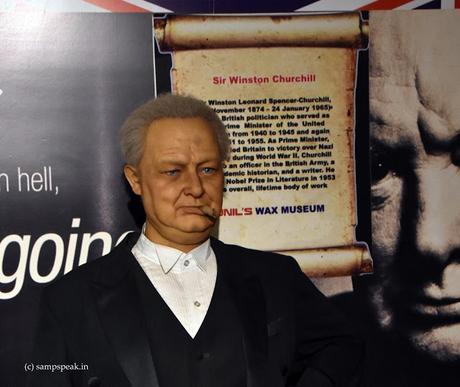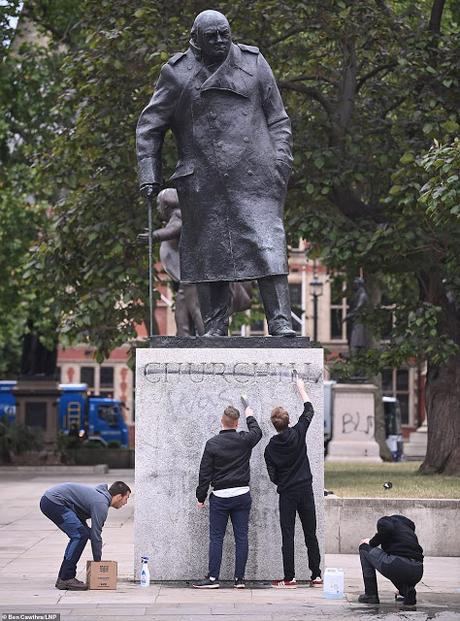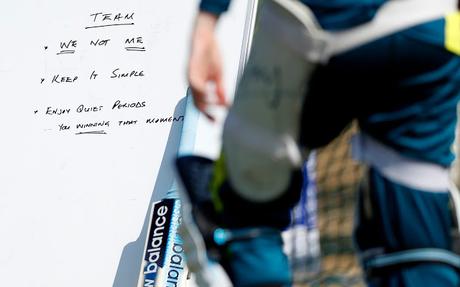How much of history do we know ? – all that we read in our Schools was British (invasion and colonialism) history but that always glorified the invaders and ingrained that freedom was obtained without shedding blood by Gandhi, Nehru and others ! This famous British Politician considered as a great influencer of the last century arrived in Bombay in Oct 1896.He stayed in Bangalore for 19 months, visiting Calcutta three times and joining expeditions to Hyderabad and the North West Frontier. He began a project of self-education while in India, reading a range of authors including Plato, Adam Smith, Charles Darwin, Henry Hallam, Edward Gibbon, Winwood Reade, and Thomas Babington Macaulay. Interested in British parliamentary affairs, he declared himself "a Liberal in all but name" but added that he could never endorse the Liberal Party's support for Irish home rule.Mixing reformist and conservative perspectives, he supported the promotion of secular, non-denominational education while opposing women's suffrage, is what is written of him. He died in Jan 1965 ! can you identify this person now in news !
 The area has
become a key gathering place for activists demanding racial justice and
opposing the Government. The £30,000 statue was unveiled by his widow
Clementine in 1973 and created by Ivor Roberts-Jones. It is not the first time it has been
defaced. In 2000, it was sprayed with red paint to give the appearance of blood
dripping from its mouth, while during the 2010 student protests it was defaced –
it came after the Prime Minister said
the anti-racism demonstrations had been 'subverted by thuggery' after
protesters tore down a statue of a slave trader in Bristol and clashed with
police in the capital. Scotland Yard said 12 people were arrested and eight
officers injured in London yesterday, while in Bristol protesters toppled the
bronze memorial to slave trader Edward Colston and dumped it into the harbor.
Shadow Justice Secretary
David Lammy lashed out at what he said was the suggestion that the Black Lives
Matter demonstrations in London, Bristol and other cities were simply a
reaction to the murder of George Floyd. He demanded that ministers accept
that'racism
and prejudice exist in the United Kingdom as well as the United States', amid
heightened tensions. Unrest in London yesterday saw eight police officers hurt
and a statue of Winston Churchill vandalised, while in Bristol, a statue of
17th century slave trader Edward Colston was torn down and thrown into the
harbour. Health Secretary Mr Hancock used an interview
with Sky to suggest the protests were 'all based in response to events in
America rather than here'. He said he did not think Britain was a racist
country but admitted there were 'injustices' that needed to be tackled. In response, Mr Lammy told the Guardian:'To suggest there is only a problem on the
other side of the Atlantic might make Matt Hancock feel better, but it shows
real ignorance. 'People in this country are not only showing solidarity with
George Floyd and other African Americans. We must turn this moment into one of
change and justice in the UK too.'
The area has
become a key gathering place for activists demanding racial justice and
opposing the Government. The £30,000 statue was unveiled by his widow
Clementine in 1973 and created by Ivor Roberts-Jones. It is not the first time it has been
defaced. In 2000, it was sprayed with red paint to give the appearance of blood
dripping from its mouth, while during the 2010 student protests it was defaced –
it came after the Prime Minister said
the anti-racism demonstrations had been 'subverted by thuggery' after
protesters tore down a statue of a slave trader in Bristol and clashed with
police in the capital. Scotland Yard said 12 people were arrested and eight
officers injured in London yesterday, while in Bristol protesters toppled the
bronze memorial to slave trader Edward Colston and dumped it into the harbor.
Shadow Justice Secretary
David Lammy lashed out at what he said was the suggestion that the Black Lives
Matter demonstrations in London, Bristol and other cities were simply a
reaction to the murder of George Floyd. He demanded that ministers accept
that'racism
and prejudice exist in the United Kingdom as well as the United States', amid
heightened tensions. Unrest in London yesterday saw eight police officers hurt
and a statue of Winston Churchill vandalised, while in Bristol, a statue of
17th century slave trader Edward Colston was torn down and thrown into the
harbour. Health Secretary Mr Hancock used an interview
with Sky to suggest the protests were 'all based in response to events in
America rather than here'. He said he did not think Britain was a racist
country but admitted there were 'injustices' that needed to be tackled. In response, Mr Lammy told the Guardian:'To suggest there is only a problem on the
other side of the Atlantic might make Matt Hancock feel better, but it shows
real ignorance. 'People in this country are not only showing solidarity with
George Floyd and other African Americans. We must turn this moment into one of
change and justice in the UK too.'
 Sir Winston
Leonard Spencer-Churchill (1874 – 1965) was a British politician,
army officer, and writer. He was Prime Minister of the United Kingdom from 1940
to 1945, when he led the country to victory in the Second World War, and again
from 1951 to 1955. Apart from two years between 1922 and 1924, Churchill was a
Member of Parliament (MP) from 1900 to 1964 and represented a total of five
constituencies.
Of mixed English and
American parentage, Churchill was born in Oxfordshire to a wealthy,
aristocratic family. He joined the British Army in 1895, and saw action in
British India, the Anglo-Sudan War, and the Second Boer War, gaining fame as a
war correspondent and writing books about his campaigns. Elected an MP in 1900,
initially as a Conservative, he defected to the Liberals in 1904. He served as Chancellor of the Exchequer in
Stanley Baldwin's Conservative government, returning the pound sterling in 1925
to the gold standard at its pre-war parity, a move widely seen as creating
deflationary pressure and depressing the UK economy. Out of office during the
1930s, Churchill took the lead in calling for British rearmament to counter the
growing threat of militarism in Nazi Germany. At the outbreak of the Second
World War he was re-appointed First Lord of the Admiralty. In 1940 he became
prime minister, replacing Neville Chamberlain. Churchill oversaw British
involvement in the Allied war effort against the Axis powers, resulting in
victory in 1945.
Widely considered one of
the 20th century's most significant figures, Churchill remains popular in the
UK and Western world, where he is seen as a victorious wartime leader who
played an important role in defending Europe's liberal democracy from the
spread of fascism. Also praised as a social reformer and writer, among his many
awards was the Nobel Prize in Literature. Conversely, his imperialist views and
comments on race, as well as some wartime events like the 1945 bombing of
Dresden, have generated controversy.During the recent protests in UK his statue was defaced.
The Black Lives Matter
protester who 'tagged' the statue of Winston Churchill said he did it because
he believes Britain's greatest Prime Minister was a 'confirmed racist' who
cared more about colonialism than black people. The masked young man, who is
being searched for by the Metropolitan Police today for the vandalism in
Parliament Square, claimed that Mr Churchill only fought the Nazis to protect
the empire - not for 'people of colour'. Using black spray paint yesterday he
daubed the phrase 'was racist' below the wartime leader's name. He added that
Churchill did it sheerly for
colonialism. People will be angry - but I'm angry that for many years we have
been oppressed'.
Sir Winston
Leonard Spencer-Churchill (1874 – 1965) was a British politician,
army officer, and writer. He was Prime Minister of the United Kingdom from 1940
to 1945, when he led the country to victory in the Second World War, and again
from 1951 to 1955. Apart from two years between 1922 and 1924, Churchill was a
Member of Parliament (MP) from 1900 to 1964 and represented a total of five
constituencies.
Of mixed English and
American parentage, Churchill was born in Oxfordshire to a wealthy,
aristocratic family. He joined the British Army in 1895, and saw action in
British India, the Anglo-Sudan War, and the Second Boer War, gaining fame as a
war correspondent and writing books about his campaigns. Elected an MP in 1900,
initially as a Conservative, he defected to the Liberals in 1904. He served as Chancellor of the Exchequer in
Stanley Baldwin's Conservative government, returning the pound sterling in 1925
to the gold standard at its pre-war parity, a move widely seen as creating
deflationary pressure and depressing the UK economy. Out of office during the
1930s, Churchill took the lead in calling for British rearmament to counter the
growing threat of militarism in Nazi Germany. At the outbreak of the Second
World War he was re-appointed First Lord of the Admiralty. In 1940 he became
prime minister, replacing Neville Chamberlain. Churchill oversaw British
involvement in the Allied war effort against the Axis powers, resulting in
victory in 1945.
Widely considered one of
the 20th century's most significant figures, Churchill remains popular in the
UK and Western world, where he is seen as a victorious wartime leader who
played an important role in defending Europe's liberal democracy from the
spread of fascism. Also praised as a social reformer and writer, among his many
awards was the Nobel Prize in Literature. Conversely, his imperialist views and
comments on race, as well as some wartime events like the 1945 bombing of
Dresden, have generated controversy.During the recent protests in UK his statue was defaced.
The Black Lives Matter
protester who 'tagged' the statue of Winston Churchill said he did it because
he believes Britain's greatest Prime Minister was a 'confirmed racist' who
cared more about colonialism than black people. The masked young man, who is
being searched for by the Metropolitan Police today for the vandalism in
Parliament Square, claimed that Mr Churchill only fought the Nazis to protect
the empire - not for 'people of colour'. Using black spray paint yesterday he
daubed the phrase 'was racist' below the wartime leader's name. He added that
Churchill did it sheerly for
colonialism. People will be angry - but I'm angry that for many years we have
been oppressed'.
Fears of a second wave of coronavirus were sparked today after thousands of Black Lives Matters protesters defied pleas from the government to not gather in groups and took to the streets across Britain over the weekend. Boris Johnson insists Britain isn't a racist country while Home Secretary Priti Patel vowed to bring violent protesters to 'justice' for attacking police in London and tearing down the Edward Colston statue in Bristol. 17 suspects have been identified by Avon and Somerset Police but there have been no arrests. Leading infectious disease experts have warned any mass gathering risks 'significant numbers of further cases', with the infection known to spread rapidly among tightly-packed crowds. Back home on Churchill issue, there were references drawn to his role and comments on the famine in India.The Bengal famine of 1943 was the only one in modern Indian history not to occur as a result of serious drought, according to a study that provides scientific backing for arguments that Churchill-era British policies were a significant factor contributing to the catastrophe.The Guardian reported that researchers in India and the US used weather data to simulate the amount of moisture in the soil during six major famines in the subcontinent between 1873 and 1943. Soil moisture deficits, brought about by poor rainfall and high temperatures, are a key indicator of drought. Five of the famines were correlated with significant soil moisture deficits. An 11% deficit measured across much of north India in 1896-97, for example, coincided with food shortages across the country that killed an estimated 5 million people. However, the 1943 famine in Bengal, which killed up to 3 million people, was different, according to the researchers. Though the eastern Indian region was affected by drought for much of the 1940s, conditions were worst in 1941, years before the most extreme stage of the famine, when newspapers began to publish images of the dying on the streets of Kolkata, then named Calcutta, against the wishes of the colonial British administration. Food supplies to Bengal were reduced in the years preceding 1943 by natural disasters, outbreaks of infections in crops and the fall of Burma – now Myanmar – which was a major source of rice imports, into Japanese hands. More recent studies, including those by the journalist Madhushree Mukerjee, have argued the famine was exacerbated by the decisions of Winston Churchill’s wartime cabinet in London. Mukerjee has presented evidence the cabinet was warned repeatedly that the exhaustive use of Indian resources for the war effort could result in famine, but it opted to continue exporting rice from India to elsewhere in the empire. Rice stocks continued to leave India even as London was denying urgent requests from India’s viceroy for more than 1m tonnes of emergency wheat supplies in 1942-43. Churchill has been quoted as blaming the famine on the fact Indians were “breeding like rabbits”, and asking how, if the shortages were so bad, Mahatma Gandhi was still alive.
 Concluding with a gaffe of
Tim Paine last year.Australia adopted a
quotation from Sir Winston Churchill to help them resist slipping back into
their old sledging ways when the intensity of an Ashes series threatened to
undermine their new image. Brad Haddin,
Australia's assistant coach, and captain Tim Paine, urged the players to
remember the line “behaviour never lies” which
is attributed to Churchill despite there being no documentary evidence that he
ever said it. Tim Paine was trying hard to change thepublic
face of Australian cricket since picking up the pieces as Test captain after
the ball tampering scandal. The full quote credited to Churchill is “I no longer
listen to what people say, I just watch what they do. “Behaviour never lies.” Paine
actually misquoted him but the meaning was the same in that he knows his team
will be judged on their actions, rather than what they say.
Interesting !
With regards
– S. Sampathkumar
8.6.2020
Concluding with a gaffe of
Tim Paine last year.Australia adopted a
quotation from Sir Winston Churchill to help them resist slipping back into
their old sledging ways when the intensity of an Ashes series threatened to
undermine their new image. Brad Haddin,
Australia's assistant coach, and captain Tim Paine, urged the players to
remember the line “behaviour never lies” which
is attributed to Churchill despite there being no documentary evidence that he
ever said it. Tim Paine was trying hard to change thepublic
face of Australian cricket since picking up the pieces as Test captain after
the ball tampering scandal. The full quote credited to Churchill is “I no longer
listen to what people say, I just watch what they do. “Behaviour never lies.” Paine
actually misquoted him but the meaning was the same in that he knows his team
will be judged on their actions, rather than what they say.
Interesting !
With regards
– S. Sampathkumar
8.6.2020

